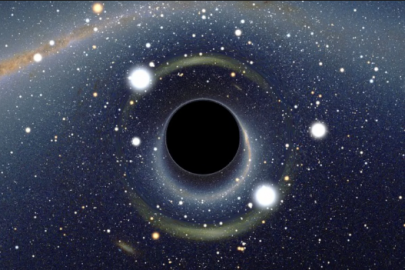We’ve seen supermassive black holes at the centers of galaxies tearing stars to shreds. We’ve detected the energy wave from relatively tiny black holes slamming together to create a wobble in space-time a billion light-years away. But what about the medium-sized black holes in between these extremes?
Scientists have been looking for such objects, and have now provided further, more compelling evidence for intermediate-mass black holes. They spotted a bright explosion that decayed over 10 years in a galaxy’s outskirts. Its mass is around 10 thousand times the mass of our Sun.
“I would say we were very lucky to find this source,” Dacheng Lin, an assistant professor from the University of New Hampshire, told Gizmodo.
The team of scientists spotted the x-ray emitting source, called 3XMM J215022.4−055108, with the XMM-Newton in 2006 and the Chandra spacecraft in 2009. The source was detected again in 2014 and 2016, but dimmer, according to the paper published in Nature Astronomy. It’s 800 million light-years away.
These intermediate-mass black holes are hard to spot, mainly because it’s thought that they form in clusters of stars, outside of the dense galactic centers. Scientists generally detect black holes based on the fact that the behemoths rip up nearby stuff, creating a disk of light-emitting gas. Black holes far from galactic centers might not have available gas to suck up. But what appeared to be a star slamming into this one offered a telltale flash of light.
At least, that’s what all the combined data and modeling seem to say.
One scientist not involved with the study, professor Priya Natarajan from Yale University, told Gizmodo the announcement was exciting. “These extra-bright but short-lived flares might be the way to detect” the missing intermediate-mass black holes, she said. “It’s a demonstration of where we may want to look and how we may find this lurking population.”
This is not the first candidate for an intermediate black hole. Scientists last year announced evidence of another near our own galaxy’s dense center. But this team feels that they’ve discovered one of the strongest candidates yet.
I hope you’re ready for some awkward teenage black holes. Because you’ll probably be hearing a lot more about them soon.
Source: gizmodo
Ask me anything
Explore related questions





